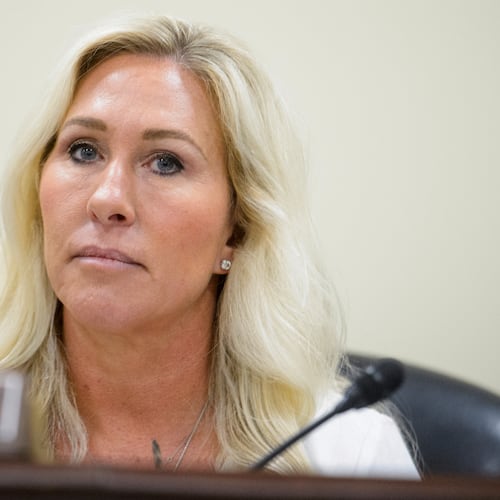As the nation was coming to grips with the COVID-19 pandemic in early 2020, officials with Georgia’s massive teacher pension fund watched assets plummet $15 billion in a few months when the stock market tanked.
The economic recovery and soaring stock market that followed brought the Teachers Retirement System — which is partially funded by taxpayers — to new heights.
And then it plunged again, losing $15 billion in the recently completed fiscal 2022 as the stock market dipped again over the past year.
Buster Evans, executive director of the pension system relied on by 400,000 public educators and retirees, said gains in recent weeks since the fiscal year ended June 30 had brought the TRS’ assets back up 5.45% by Wednesday morning.
It’s been an unusually wild ride for a system that saw its fund jump about 60% in the stock runup after the economy reopened following the short COVID pandemic shutdown, only to take a substantial dip in fiscal 2022.
The health of the state’s teacher pension system is closely watched because so many educators and retirees depend on the benefits. And because state lawmakers have raised concerns about its long-term financial viability.
The pensions — which go to K-12 public school, university and technical college educators — are funded through a combination of employee contributions, money from taxpayers and investments.
Teachers see the chance for educators to retire after 30 years or so and receive a good pension as one of the state’s best recruiting tools to attract young people into the profession and keep them in schools.
At the end of fiscal 2022 almost 130,000 retirees were receiving on average about $42,000 a year in pension benefits. The TRS annually pays out more than $5 billion to retirees.
Even more working educators currently pay into the system.
The system’s financial heath follows trends in the stock market. When the market is up, the system sees its assets climb. When it’s down, it goes the other way. It pretty much mirrors what private investors are seeing.
Evans said fiscal 2021 was the best year for TRS investments since 1986. Assets stood at more than $102 billion. One peek at your 401(k) or investment portfolio will tell you 2022, at least through June 30, wasn’t a repeat. The TRS fund dropped to about $87 billon.
The benchmark Dow Jones Industrial Average dropped about 10% between June 30, 2021, and the same date in 2022.
State lawmakers for years have fretted over the long-term financial stability and taxpayer costs of the TRS.
An audit in 2019 said that without any changes the state and local school district contributions into the plan would rise to $2.4 billion by 2025 and $4.4 billion by 2045. That would make contributing into the teacher pension system one of the state’s biggest expenses.
Legislation filed in recent years by Republicans to make changes to the system have stalled, in part because of strong lobbying efforts by teachers and retirees who have flooded members of the House Retirement Committee with calls and emails opposing the bills lawmakers filed.
The most common suggestion has been to give new teachers 401(k)-type funds — with matching money contributed by the government — instead of the current pensions where they would receive a monthly check for life when they retire.
Teacher pension fund’s strength
Below are the end-of-the-fiscal-year assets of the Teachers Retirement System:
Fiscal 2022: $87 billion
Fiscal 2021: $102.2 billion
Fiscal 2020: $81.2 billion
Fiscal 2019: $78.9 billion
Fiscal 2018: $75.6 billion
Fiscal 2017: $71.4 billion
Source: Teachers Retirement System
About the Author
Keep Reading
The Latest
Featured




